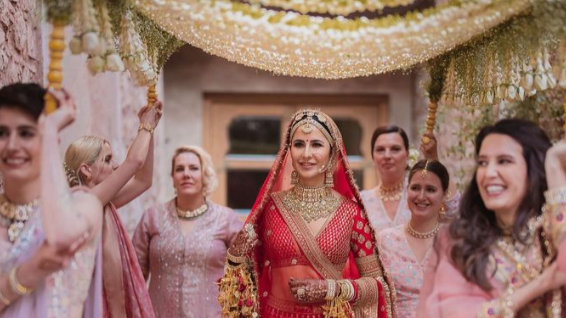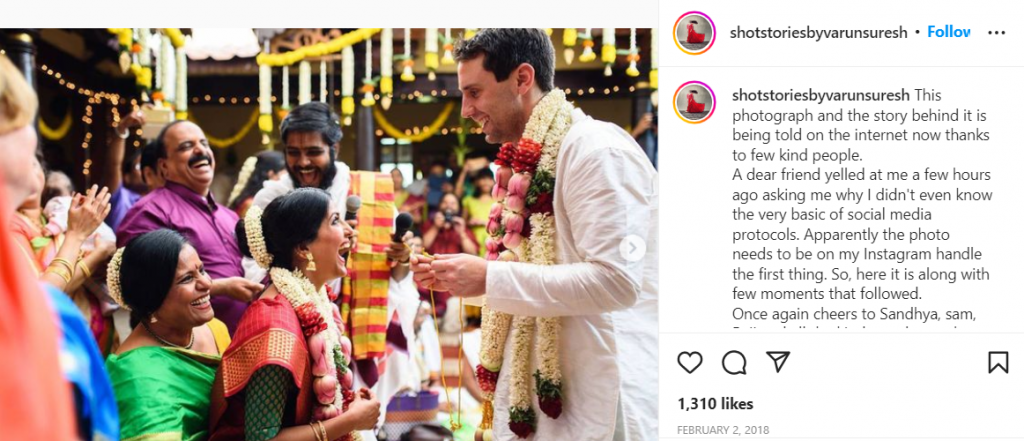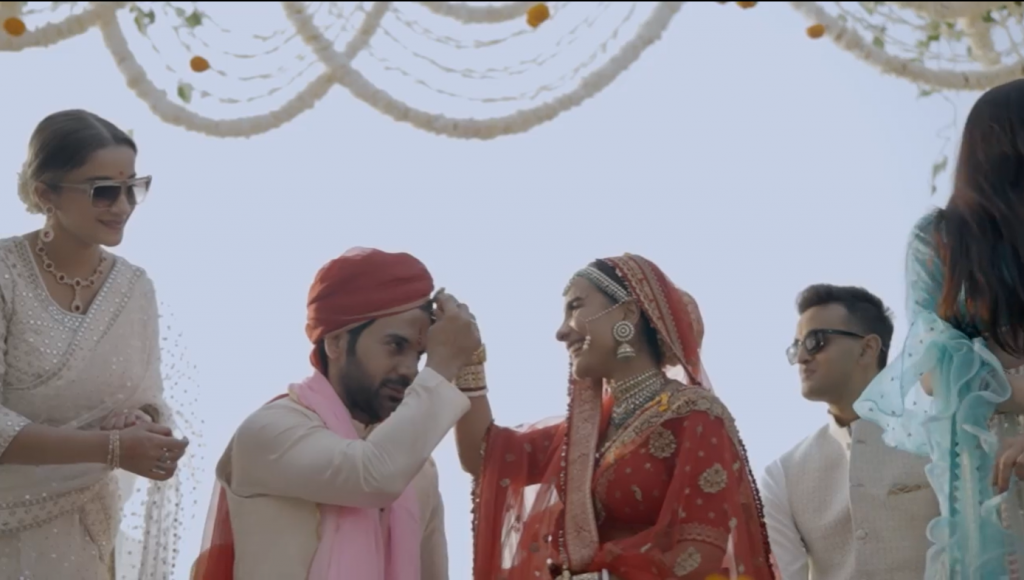Tired of patriarchal wedding practices? Here’s our list of rituals you can modify and how you can get started on them.
Sitting on a stage donning a deep red coloured lehenga, wearing jewellery passed on to her from generations preceding her, with the man that she is going to spend the rest of her life next to her. That is the moment many Indian women dream of. But what happens when that moment is shattered when she is made to feel lesser than her partner?
While gender roles of husband and wife inside their homes has definitely gone through a transformation, wedding protocols and rituals are still a few years behind. But in the 21st century, women are at par with men in all walks of life and that includes the day of their wedding. But where to start? Well, here are few rituals, what they mean and how you can edit and alter some of them:
Phoolon ki Chaadar: It is the tradition in which the bride walks down the aisle under a blanket made of flowers which is traditionally help by her brothers on all four sides. It symbolises that her brothers will protect her from anything and everything, which is why they surround her from all sides. The blanket on top signifies their love under which she blossomed.While there’s nothing wrong with the tradition in itself, many brides are now getting their sisters, mothers and other strong female figures to hold the chaadar for them as a symbol of the strength they possess in her life.
Popular Bollywood A-lister, Katrina Kaif, recently got married and had her sisters walk her down the aisle while holding the chaadar. She took to her Instagram and wrote “Growing up, we sisters always protected each other. They are my pillars of strength and we keep each other grounded… May it always stay that way!”

Kanyadaan: The controversies surrounding Kanyadaan have been around for a while. The ritual supposedly signifies a father giving away his daughter to her new groom. While some women choose do away with the practice altogether, some have altered it and given it a new dimension. Traditionally mothers do not participate in this ritual, and single or widowed mothers aren’t even allowed close to their daughters during major wedding rituals. But brides are now changing this.
In 2017, Sandhya, an Australia-based Tamil woman, had her single mother do her Kanyadaan. The story went viral on the internet after a man called Aravind Sudarshan saw the image and posted about it. In his Facebook post he said, “Traditions and rituals were merely a box drawn around us, so that we maintain uniformity and discipline. Sometimes altering practices or making it flexible, touches more lives.” The story was shared by many notable personalities which motivated many others to break the age-old tradition.

Sindoor: Sindoor is a vermillion-coloured powder that it applied on the woman’s forehead towards the end of the wedding. It is considered as a marker of a married woman. Her husband applies it on her head on the day of her wedding and then she is expected to carry forward the practice in her daily life.While many urban women have stopped wearing sindoor in their daily life, the practice continues in the wedding to inform the world symbolically that she is now someone’s partner. A few couples in India now apply sindoor to each other on their wedding day showing that they are both committed to each other and not just the woman to her husband.
A video of Bollywood actor Rajkummar Rao asking his wife, Patralekhaa, to apply sindoor on his forehead, broke the internet. When asked about it in an interview he said, “It was something that was very impulsive. None of us planned it. I really believe in equality. We are both equal and that’s how it should be.”

Baraat: The baarat is a procession that involves the groom riding on horse to the bride’s house (or now the wedding venue) accompanied by his friends and family. The procession usually comprises of the groom’s friends and family dancing in front of the horse. Historically, the practice was carried out as the groom and his family travelled to the bride’s village to get them married and bring the bride back with them. The travel would last for days, which is why music and dance was a part of it, to keep the party entertained. In south of India, they have a similar practice called Jaanavasam but the groom usually comes in a car rather than a horse.
While this tradition is today primarily followed just for celebration and no religious reasons, brides feel that they should also have the chance to make their glorious celebratory entrance which is fun and light. Some couples opt to have a combined baarat accompanied by both families, while some brides have made a statement by being the ones to ride the horse to their groom’s ‘house’.
Jiya Sharma from Rajasthan sat in a horse cart and went to her groom’s house. She wanted to give a message of women empowerment through this. While talking to the Times of India, Jiya’s father-in-law said, “This will send a strong message to the society. People don’t accept girl children in Rajasthan. This will give the message that there is no difference between girls and boys.”70
Touching feet: In every Indian wedding, at some point during the wedding proceedings, the bride has to bend down and touch the feet of her groom and seek his blessings out of respect. While the rituals in itself isn’t problematic as it is was only meant to signify respect, the issue identified is in it being one-sided.
Brides and grooms today, consider each other equals and hence want all rituals to represent that including this. Dr Vinita Karia shared a small clip from her wedding where she touched her husband’s feet and he in return bent down and touched her feet. The video also showed the part where he went down on one knee to put a ring on her finger, after which she too went down on her knees and put a ring on his finger.
Change begins with a choice
Dia Mirza Rekhi
Vidaai: It is the last ritual in a wedding where the bride’s family bids her farewell and sends her off with her husband to her new home and new family. In this ritual the bride stops at the exit and throws three handfuls of coin and rice behind her. It is supposed to signify her repaying her debt to her parents for bringing her up. Daughters are also considered the goddess Lakshmi (goddess of wealth and prosperity) of their maternal homes and so throwing of the rice is meant to symbolise that she wishes for her maternal family to continue remaining wealthy and prosperous.
Traditionally vidaai was always seen as a very sad ceremony where in everyone is supposed to be emotional. This has also largely been perpetuated by Bollywood and its portrayal of this ritual. Although that has changed now, and many brides are smiling and happy during their vidaai, some brides go one step forward and decide to do away with the ritual altogether as they don’t believe that they are leaving their family behind. Women today can very well manage two families together.
Bollywood actress Dia Mirza had a wedding that broke many age-old traditions including the elimination of vidaai and kanyadaan. Her Instagram post about her wedding read, “We said NO to ‘Kanyadaan’ and ‘Bidaai’. Change begins with a choice, doesn’t it?” She also had a minimal environmentally conscious wedding with bio-degradable décor, set-up in her own backyard.
Officiated by a Priestess: Speaking of Dia Mirza, another new tradition she had was her wedding being officiated by a priestess. While this isn’t about altering a single ritual, opting for a priestess sends out a message much larger than changing one ritual. In India, priestesses were seen as an issue in the society. Brahminical pandits (priests) believed that educating a woman would do no good for the society as they will start asking questions. Women are also traditionally seen as impure in Hinduism due to their monthly menstruation cycles, which is why they weren’t taught any mantras recited to God.
Couples that opted for priestesses noticed that they are more receptive to change and represent their feminist ideologies well. Priestesses are also more open to different translations and interpretations of rituals. Most existing priestesses in India are Sanskrit experts and hence really understand the root of rituals and what they mean.
Seema Anand, a UK-based sexual health educator and feminist recently officiated the wedding of an British-Indian couple. Although she did not don the role of a priestess, her officiating the wedding in itself, did make a statement.
Changing names: This is as basic as it gets. While wanting to take their partner’s surname is not necessarily a wrong thing, some women feel that it means parting with their own identities. Keeping your maternal surname after marriage is not a new concept, and has been around for a few years. In the last decade many women have now opted for a combined surname. Popular Bollywood actresses like Aishwarya Rai Bachchan, Yami Gautam Dhar, Kareena Kapoor Khan, Priyanka Chopra Jonas, have all adopted the latter half of their names after marriage but have retained their maternal surnames as middle names.
Couples are also going one step further and are now adopting combined surnames. For example: Bollywood actress Sonam Kapoor changed her name to Sonam Kapoor Ahuja after her wedding, while her husband Anand Ahuja also changed his name to Anand S Ahuja, where the ‘S’ stands for Sonam.
This has led to couples now giving their children combined surnames as well so the child retains the heritage of maternal and paternal side. Actress Neha Dhupia Bedi and her husband Angad Bedi, gave their two children the surname Dhupia Bedi which is a combination of both their names.
This was our list of practices that you can change in any amount on your big day, to make sure they reflect your ideologies and beliefs while still retaining the core essence of your tradition and culture. Here are a few pointers to keep in mind before you try and implement these:
- Make sure you and your partner are on the same page. This not only helps makes sure that your core values are the same, but also helps makes convincing family easier.
- Start with a conversation. Convincing parents, grandparents and other peers may not be a cake walk. So, start with explaining your point of view and why you would like to alter the ritual. It might take a few tries but eventually it will work out.
- If your family still doesn’t agree, try to strike a compromise with them. Ask them to tone down what you want toned down and in return let them have their way in something you are not much concerned about.
- Read and research more on any ritual you want to eliminate, to make sure you really understand the significance of it. You can even try and talk to someone who might have knowledge of things like this.
- Request your priest or priestess to translate or explain the vedic mantras in a language comfortable to you and your partner. This will help you understand each and everything you participate in at your wedding.
A wedding at the end of the day is the coming together of two equal partners who are both investing the same amount of time, effort, love and resources into the relationship. Its all about the bride and groom that day, so make sure you do what makes you happy, whether that be a traditional by-the-book wedding or an off-beat stereotype shattering one.
